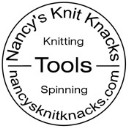Did you know that Yarn tension is additive? That means that if you have a yarn path that bends in 2 places that the tension is being affected by 2 different sources of tension. Also, the solidity of the yarn guide can also cause the tension to vary. The yarn guides must be rigid and must not vary. The tool that is receiving the yarn from the source is impacted by this varying tension.
The ball winder for example, is dealing with fast moving yarn so when you alter the tension while it is moving at that speed, all heck can break loose. So if you maintain consistent tension and speed and keep your hands off of the yarn while winding onto a ball winder, you will be best off. Simply holding the yarn in your hand can also play havoc because your hand moves around ever so slightly and when it does, it affects the tension. Learn to use and depend on the fixed yarn guides that are on the equipment (ball winder, meter, swift and you will be much better off).
Not enough tension can also be a big problem. Tension is what keeps the yarn tight enough so that it does not wrinkle up or go limp. Yarn does not like to go limp and neither should you. Once you knit with it you will be applying the final tension on the yarn and you probably already know that the tension you exert with your needles is key to producting a properly knitted project.
So from beginning to end, tension is key. Not too much and not too little. But keep in mind that tension is like an addition problem. 2+2 = 4. If you want 4 and not 6 or 2, then keep an eye on all of the sources of tension in your kniting process (winding and knitting).





